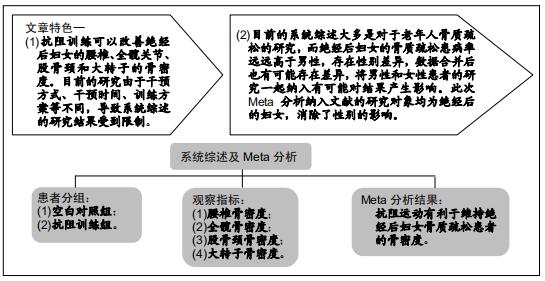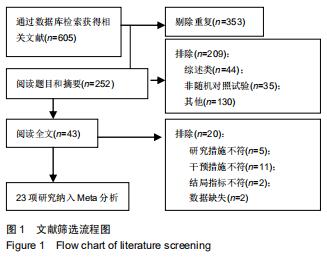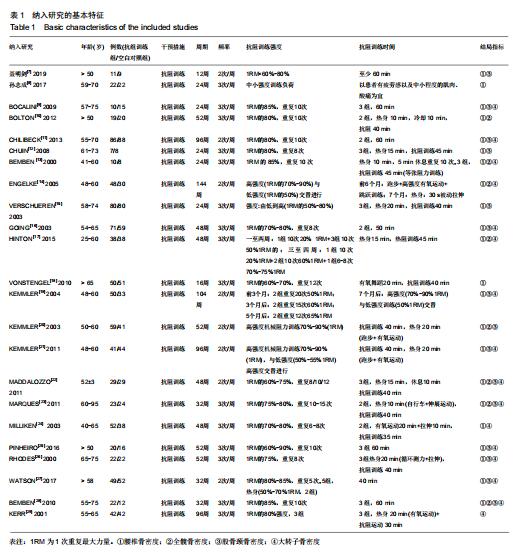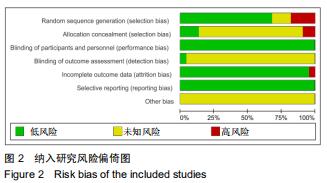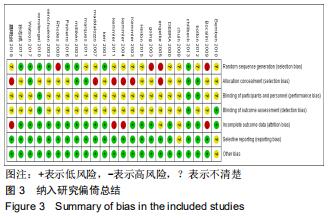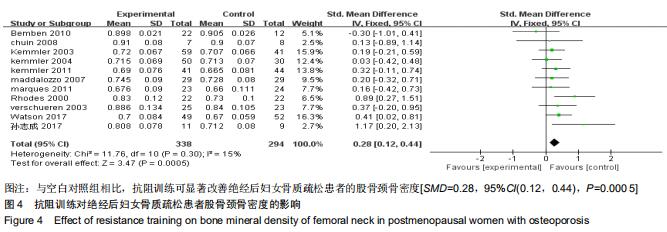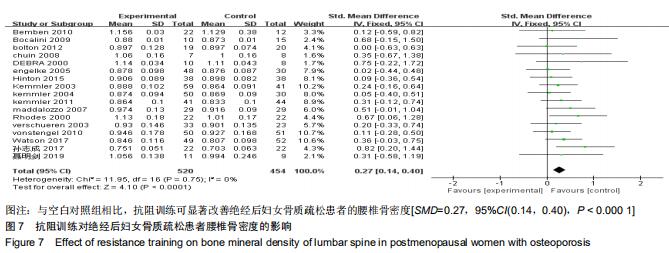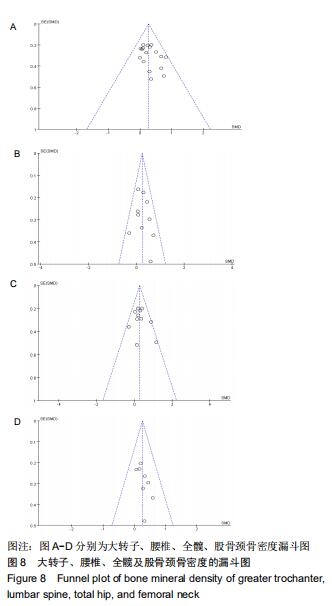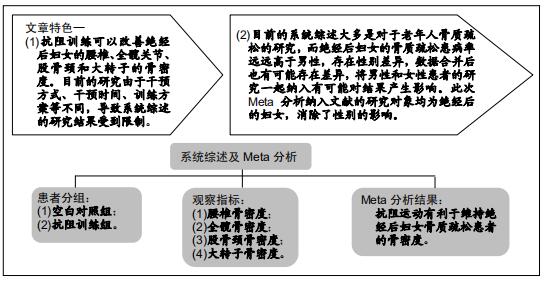|
[1] 王临虹,夏维波,林华.骨质疏松症防治[M].北京:北京大学医学出版社, 2017.
[2] AKESSON K, MARSH D, MITCHELL PJ, et al.Capture the Fracture: a Best Practice Framework and global campaign to break the fragility fracture cycle. Osteopors Int. 2013;24:2135-2152.
[3] MELTON LJ, CHRISCHILLES EA, COOPER C, et al. How many womenhave osteoporosis. Bone Miner Res. 2005;20(5):886-892.
[4] KANIS JA, JOHNELL O, ODEN A, et al. Long-term risk of osteoporotic fracture in Malmö. Osteoporos Int. 2000;11(8): 669.
[5] 朴俊红,庞莲萍,刘忠厚,等.中国人口状况及原发性骨质疏松症诊断标准和发生率[J].中国骨质疏松杂志,2002,28(1):1-6.
[6] KIM JE, MOON H, JIN HM. The effects of exercise training and type of exercise training on changes in bone mineral density in Korean postmenopausal women: a systematic review. Exerc Nutrition Biochem. 2016;20(3):7-15.
[7] 聂明剑,张智海,冯强,等.12周社区运动干预对绝经后骨质疏松症女性骨密度的影响研究[J].中国骨质疏松杂志,2019,25(4): 446-451.
[8] 孙志成,欧阳钢,顾晓美,等.核心力量训练对绝经后骨质疏松症患者跌倒风险相关因素及骨密度的影响[J]. 河北医科大学学报,2017,38(11):1300-1314.
[9] BOCALINI DS, SERRA AJ, DOS SANTOS L, et al. Strength training preserves the bone mineral density of postmenopausal women without hormone replacement therapy. J Aging Health. 2009;21(3):519-527.
[10] BOLTON KL, EGERTON T, WARK J, et al. Effects of exercise on bone density and falls risk factors in post-menopausal women with osteopenia: A randomised controlled trial. J Sci Med Sport. 2012;15: 102-109.
[11] CHILIBECK PD, VATANPARAST H, PIERSON R, et al. Effect of exercise training combined with isoflavone supplementation on bone and lipids in postmenopausal women: a randomized clinical trial. J Bone Miner Res. 2013;28(4):780-793.
[12] CHUIN A, LABONTÉ M, TESSIER D, et al. Effect of antioxidants combined to resistance training on BMD in elderly women: a pilot study. Osteoporos Int. 2009;20(7):1253-1258.
[13] BEMBEN DA, FETTERS NL, BEMBEN MG, et al. Musculoskeletal responses to high- and low-intensity resistance training in early postmenopausal women. Med Sci Sports Exerc. 2000;32(11): 1949-1957.
[14] ENGELKE K, KEMMLER W, LAUBER D, et al. Exercise maintains bone density at spine and hip EFOPS: a 3-year longitudinal study in early postmenopausal women. Osteoporos Int. 2006;17:133-142.
[15] FISCHBACHER M, WEEKS BK, BECK BR. The influence of antiresorptive bone medication on the effect of high- intensity resistance and impact training on osteoporotic fracture risk in postmenopausal women with low bone mass: protocol for the MEDEX-OP randomised controlled trial. BMJ Open. 2019;9(9):1-11.
[16] GOING S, LOHMAN T, HOUTKOOPER L, et al. Effects of exercise on bone mineral density in calcium-replete postmenopausal women with and without hormone replacement therapy. Osteoporos Int. 2003;14: 637-643.
[17] HINTON PS, NIGH P, THYFAULT J. Effectiveness of resistance training or jumping-exercise to increase bone mineral density in men with low bone mass: a 12-month randomized, clinical trial. Bone. 2015; 79:203-212.
[18] VON STENGEL S, KEMMLER W, ENGELKE K, et al. Effects of whole body vibration on bone mineral density and falls: results of the randomized controlled ELVIS study with postmenopausal women. Osteoporos Int. 2011;22:317-325.
[19] KEMMLER W, LAUBER D, WEINECK J, et al. Benefits of 2 years of intense exercise on bone density, physical fitness, and blood lipids in early postmenopausal osteopenic women. Arch Intern Med. 2004; 164(10):1084-1091.
[20] KEMMLER W, ENGELKE K, WEINECK J, et al. The erlangen fitness osteoporosis prevention study:a controlled exercise trial in early postmenopausal women with low bone density-first-year results. Arch Phys Med Rehabil. 2003; 84:673-382.
[21] KEMMLER W, VON STENGEL S, BEBENEK M, et al. Exercise and fractures in postmenopausal women: 12-yearresults of the Erlangen Fitness and Osteoporosis Prevention Study (EFOPS). Osteoporos Int. 2011;23(4):1267-1276.
[22] MADDALOZZO GF, WIDRICK JJ, CARDINAL BJ, et al. The effects of hormone replacement therapy and resistance training on spine bone mineral density in early postmenopausal women. Bone. 2007;40(5): 1244-1251.
[23] MARQUES EA, WANDERLEY F, MACHADO L, et al. Effects of resistance and aerobic exercise on physical function, bone mineral density, OPG and RANKL in older women. Exp Gerontol. 2011;46(7): 524-532.
[24] MILLIKEN LA, GOING SB, HOUTKOOPER LB, et al. Effects of exercise training on bone remodeling, insulin-like growth factors, and bone mineral density in postmenopausal women with and without hormone replacement therapy. Calcif Tissue Int. 2003;72(4):478-484.
[25] BORBA-PINHEIRO CJ, DANTAS EH, VALE RG,et al. Resistance training programs on bone related variables and functional independence of postmenopausal women in pharmacological treatment: A randomized controlled trial. Arch Gerontol Geriatr. 2016; 65:36-44.
[26] RHODES EC, MARTIN AD, TAUNTON JE, et al. EVects of one year of resistance training on the relation between muscular strength and bone density in elderly women. Br J Sports Med 2000;34(1):18-22.
[27] WATSON SL, WEEKS BK, WEIS LJ, et al. High-intensity resistance and impact training improves bone mineral density and physical function in postmenopausal women with osteopenia and osteoporosis: the LIFTMOR randomized controlled trial. J Bone Miner Res. 2018; 33(2):211-220.
[28] BEMBEN DA, PALMER IJ, BEMBEN MG, et al. Effects of combined whole-body vibration and resistance training on muscular strength and bone metabolism in postmenopausal women. Bone. 2010;47:650-656.
[29] KERR D, ACKLAND T, MASLEN B, et al. Resistance training over 2 years increases bone mass in calcium-replete postmenopausal women. J Bone Miner Res.2001;16(1):175-181
[30] KEMMLER W, VON STENGEL S. Dose-response effect of exercise frequency on bone mineral density in post-menopausal, osteo-penic women. Scand J Med Sci Sports. 2014;24:526-534.
[31] IKEDO A, KIDO K, ATO S, et al. The effects of resistance training on bone mineral density and bone quality in type 2 diabetic rats. Physiol Rep. 2019;7(6): e14046.
[32] DROR AD, VIRK K, LEE K, et al. Resistance training threshold for elevating bone mineral density in growing female rats. Int J Sports Med. 2018;39(5):382-389.
[33] STUNES AK, ERBEN RG, SCHÜLER C, et al. Skeletal effects of plyometric exercise and metformin in ovariectomized rats. Bone. 2020; 132:115-193.
|
